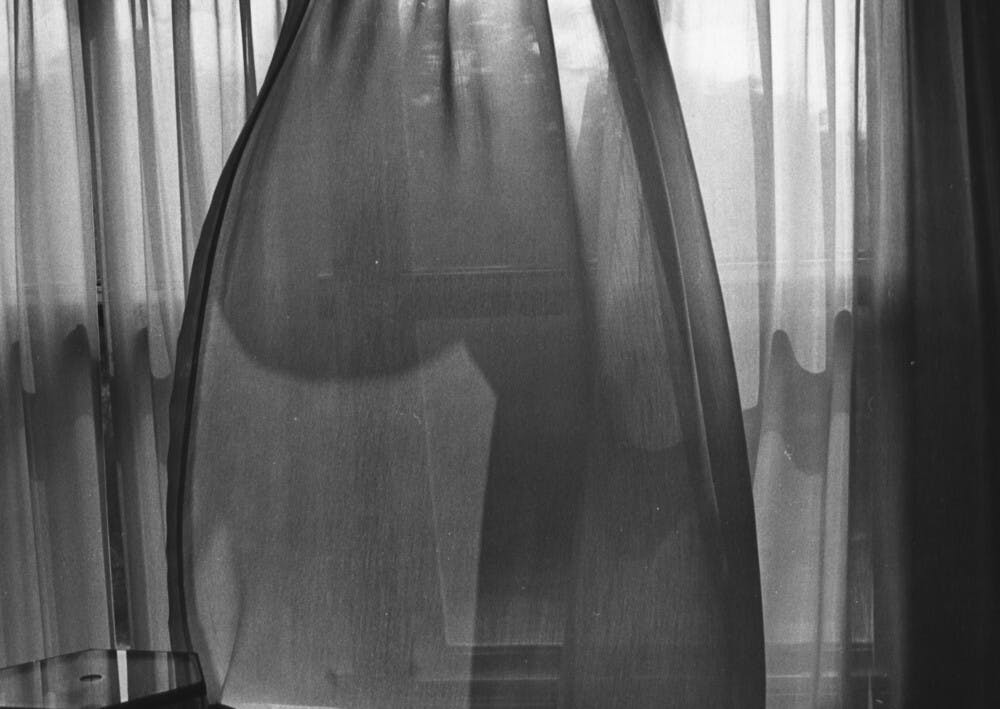Ming Smith
(b. 1947)Through a distinctive approach to rhythm, movement, and light, Ming Smith has pioneered a photographic practice that plays with spatial relations and emotive expression.
Biography
With long, hazy exposures, Ming Smith shrouds her subjects in both light and darkness and refuses a singular narrative.
Growing up in Columbus, Ohio, she watched her father—a pharmacist—take and develop photographs as a hobby. She took her mother’s Brownie camera with her to kindergarten in 1957, and proceeded to take her first official photographs with her classmates as her subjects. This exposure fostered her interest in the medium, and her family encouraged her engagement with the fine arts. As a student at Howard University, despite majoring in nursing, she took the one photography course available to maintain her practice. In 1972, she moved to New York, where she took photographs on the streets and supported herself as a model and dancer. In attending casting sessions at studios, she learned more about forms and techniques of the medium, and came into contact with photographers such as Anthony Barboza and Louis Draper. Draper soon invited Smith to join Kamoinge, a collective of Black photographers led by Roy DeCarava. At the time, she was the only female member of the group.
Within Kamoinge, Smith came to understand photography as an art as she became immersed in contemporary debates about the medium. In 1979, she submitted her work to an open call at MoMA, and became the first Black woman photographer to have her work acquired by the institution. Throughout her career, she has photographed cultural icons such as James Baldwin, Sun Ra, and Grace Jones. Smith “[paints] with light,” offering a sense of the celestial, mystical, and ephemeral within her compositions.[1] Through blurring and a collapse of the traditional distinction between subject and background, she studies the motion, energy, and spirituality that inform quotidian activities of Black life. While working predominantly with black-and-white film, she occasionally adds paint to her prints or combines elements from different negatives to create a photographic collage. Smith names Zora Neale Hurston and Katherine Dunham as sources of inspiration in her practice.
Smith received a BS from Howard University. Her work is in the permanent collections of institutions including the Detroit Institute of Arts; National Museum of African American History and Culture; and Schomburg Center for Research in Black Culture. The Studio Museum has presented her work in The Black Photographers Annual (1976); Self-Portrait (1980); and Projects: Ming Smith (2023).
[1] Lovia Gyarkye, “The Ecstatic, Elusive Art of Ming Smith,” New York Times Style Magazine, February 3, 2023
Exhibitions and Events
Ming Smith
(b. 1947)Through a distinctive approach to rhythm, movement, and light, Ming Smith has pioneered a photographic practice that plays with spatial relations and emotive expression.
Mother and Child, 1977
Biography
With long, hazy exposures, Ming Smith shrouds her subjects in both light and darkness and refuses a singular narrative.
Growing up in Columbus, Ohio, she watched her father—a pharmacist—take and develop photographs as a hobby. She took her mother’s Brownie camera with her to kindergarten in 1957, and proceeded to take her first official photographs with her classmates as her subjects. This exposure fostered her interest in the medium, and her family encouraged her engagement with the fine arts. As a student at Howard University, despite majoring in nursing, she took the one photography course available to maintain her practice. In 1972, she moved to New York, where she took photographs on the streets and supported herself as a model and dancer. In attending casting sessions at studios, she learned more about forms and techniques of the medium, and came into contact with photographers such as Anthony Barboza and Louis Draper. Draper soon invited Smith to join Kamoinge, a collective of Black photographers led by Roy DeCarava. At the time, she was the only female member of the group.
Within Kamoinge, Smith came to understand photography as an art as she became immersed in contemporary debates about the medium. In 1979, she submitted her work to an open call at MoMA, and became the first Black woman photographer to have her work acquired by the institution. Throughout her career, she has photographed cultural icons such as James Baldwin, Sun Ra, and Grace Jones. Smith “[paints] with light,” offering a sense of the celestial, mystical, and ephemeral within her compositions.[1] Through blurring and a collapse of the traditional distinction between subject and background, she studies the motion, energy, and spirituality that inform quotidian activities of Black life. While working predominantly with black-and-white film, she occasionally adds paint to her prints or combines elements from different negatives to create a photographic collage. Smith names Zora Neale Hurston and Katherine Dunham as sources of inspiration in her practice.
Smith received a BS from Howard University. Her work is in the permanent collections of institutions including the Detroit Institute of Arts; National Museum of African American History and Culture; and Schomburg Center for Research in Black Culture. The Studio Museum has presented her work in The Black Photographers Annual (1976); Self-Portrait (1980); and Projects: Ming Smith (2023).
[1] Lovia Gyarkye, “The Ecstatic, Elusive Art of Ming Smith,” New York Times Style Magazine, February 3, 2023




